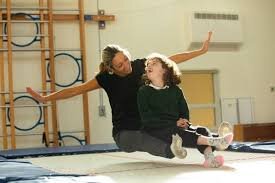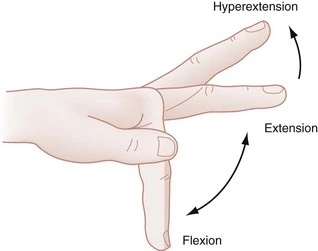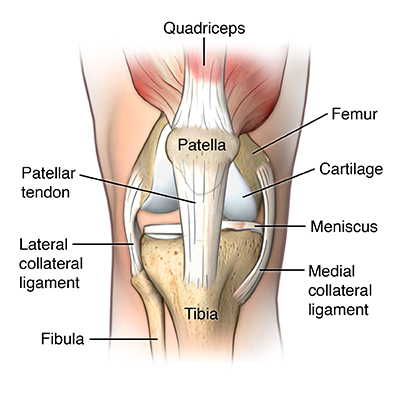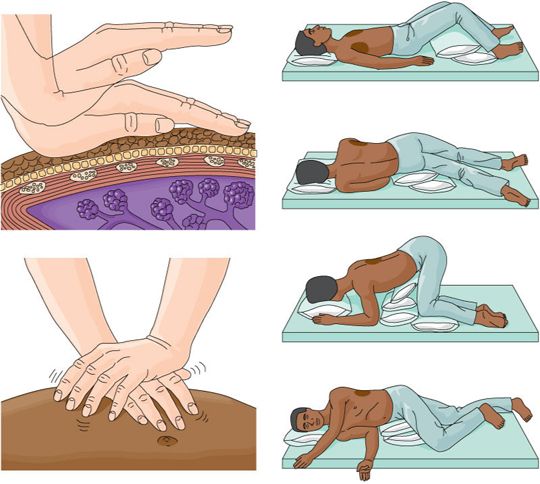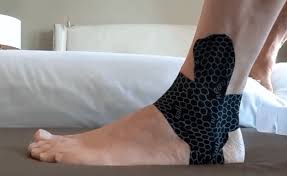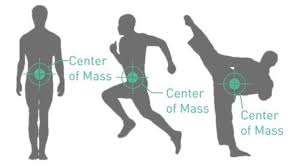Rebound Therapy
Table of Contents
What is a Rebound Therapy?
The word Rebound Therapy, when perfectly applied describes a specific methodology, assessment, and program of the utilization of trampolines to give scope for enhanced movement patterns, therapeutic positioning, exercise, and recreation for a great range of users with additional requirements. It is used to improve movement patterns and develop and promote motor skills, body awareness, balance, coordination, and communication. It is a highly enjoyable activity and is used to good effect as a cross-curricular teaching tool.
Though the idea of using trampolines in special education has been available since the 1950s it was not until the 1970s that the concept of Rebound Therapy was evolved by the physical therapist, remedial gymnast, and headteacher Eddy Anderson who worked with children with both physical and learning disabilities.
- When working with people in Rebound Therapy, if appropriate, progress may be accurately measured and recorded utilizing the Huddersfield Functional Index in conjunction with the Winstrada development program.
- Since its inception Rebound Therapy has enlarged beyond its original user base and is being used with an improving expanding client base.
- Rebound Therapy should always be utilized as a part of a therapeutic development program.
- For students with profound and complex requirements, it is suggested that this program is developed in liaison with a physiotherapist.
- For more ambulant students, it is suggested that the first 3 grades of the Winstrada development program are followed because this is based entirely on the Rebound Therapy training course.
Benefits of Rebound Therapy
Rebound Therapy is a fun and interactive activity that may not only influence a individual’s physical function but also participation, communication, and sensory system. These benefits may be enhanced by using games that incorporate activities like counting, teamwork, silly sounds, finding specific color flashcards, and identification of images or colors.
The benefits of Rebound Therapy have been connected to those found in hippotherapy, it gives a weightless environment and as well as 3-dimensional movement. This challenges the body in a multitude of ways for a diversity of benefits
Rebound Therapy may give multiple benefits involving the development and increment of:
- Strength of limbs
- Numeracy
- Patience
- Communication
- Co-ordination
- Independence
- Self-confidence
- Balance
- Muscle tone
- Reaction speed
- Self-image
- Eye contact
- Relaxation
- Freedom of movement
- Sense of achievement
- Stamina
- Spatial awareness
- Body awareness
- Social awareness
- Consideration of others
- Trust and confidence in Coach/Assistant
- Color recognition
- Height and depth perception
- Fun and enjoyment
- Other benefits include:
- Stimulation of the digestive system
- Improved bowel function
- Internal organ massage
- Clearing of toxins from the body
Respiratory Benefits
- The added benefits of stimulation of the digestive system, increased bowel function, and internal organ massage are achieved by the rhythmic acceleration and deceleration and improvement and reduction in weight offered by movement on the trampoline.
- The opening of toxins from the body is a method brought about by bouncing on a trampoline causing stretching and contracting of cells in the body.
Contraindications of Rebound Therapy
Given below are the identified contraindications for Rebound Therapy. If any of the following are present, the physiotherapist will utilize their clinical knowledge and judgment and seek appropriate advice and medical information in order to make an informed decision about the tempering of treatment or whether a potential service user is unsuitable to take part in Rebound Therapy:
- Cardiac or circulatory problems
- Downs Syndrome
- Respiratory problems
- Vertigo
- Blackouts or nausea
- Epilepsy
- Spinal cord or neck problems
- Spinal rodding
- Open wounds
- Any recent medical attention
- Brittle bones/osteoporosis
- Friction effects on the skin
- Unstable/hypermobile/painful joints
- Herniae
- Implant surgery (e.g. Baclofen pump)
- Prolapse
- Severe challenging behavior
- Gastrostomy/colostomy
- Gastric reflux
- Stress Incontinence
- Joint replacement
Absolute Contraindications
The following 6 are absolute contraindications for Rebound Therapy and under any kind of circumstances should they be performed because of the risks posed to anyone with any of these six contraindications:
Pregnancy –
- Trampolining at the time of pregnancy may cause disruptions to the womb and has the potential to cause harm to an unborn baby.
- Also, the additional strain of such a high-energy sport can cause damage to the mother whose vital organs are already functioning at a higher-than-normal level.
Detaching retina –
- This disorder is caused when the retina (the thin layer, at the back of the eye, responsible for light detection) begins to separate from the eye socket.
- It may cause blindness if not treated initially. Trampolining may cause the retina to completely detach, leading to total blindness.
Atlantoaxial instability (AAI)-
- A condition connected with 10-40% of individuals with Down’s Syndrome.
- Weakened ligaments are normal in individuals with Down’s Syndrome, causing slack joints.
- This can cause a weakness in the Atlanto- Axial joint of the 1st (Atlas) and 2nd (Axis) vertebrae, right below the skull.
- This makes sufferers of AAI prone to slippage of these vertebrae which may cause brain damage and paralysis.
People with Achondroplasia or another genetic skeletal dysplasia. People with Achondroplasia and some other kind of dwarfism have exaggerated lumbar lordosis and spinal stenosis, these two factors improve the jarring forces through the spine on impact.
People who have Spinal rods
People with osteogenesis imperfecta (Brittle bone disease)
Conditions that may be treated with rebound therapy
Rebound Therapy, as stated over, may give a large array of benefits for a large group of patient groups. As a physiotherapy intervention, one of Rebound Therapy’s primary goals is to impact muscle tone disorders. However, it is necessary to give information on the form of conditions that can benefit from Rebound Therapy. It is necessary to remember that the conditions that will be elaborated upon are not the only ones that may benefit from Rebound Therapy. The given conditions stand to benefit from Rebound Therapy:
Hypertonia
- Hypertonia is improved tightness in the muscle tone, which decreases the capacity of the muscle tissue to stretch.
- This is caused by injury to the motor pathways, in the central nervous system, which takes information from the central nervous system to the muscles that control basic activities like posture, muscle tone, and muscle reflexes.
- Left untreated hypertonia may cause severe pain, decreased quality of life, loss of function, and deformity.
- In the most severe cases, hypertonia may completely stop joint movement.
- There are 2 forms of hypertonia; spastic hypertonia and dystonic hypertonia.
Spastic hypertonia
- Spastic hypertonia can be caused by a number of conditions like; cerebral palsy, stroke, and spinal cord injury.
- This type of spastic hypertonia leads to uncontrolled muscle spasms, stiffening and straightening of the muscles, and sudden contractions of all or part of the muscle leading to abnormal muscle tone.
Dystonic hypertonia
- This refers to the resistance of the passive stretching of muscles (passive stretching of muscles occurs when the physiotherapist stretches the muscle at a minimum velocity to a comfortable length).
- Dystonic hypertonia also tends to when the muscle returns to its previously fixed position following movement.
- This type of hypertonia is most usual in Parkinsonism.
Hypotonia
- Hypotonia is a state of minimal muscle tone that may frequently lead to decreased muscle strength.
- Hypotonia is not the same as muscle weakness but it may sometimes be difficult to use the muscle which exhibits minimal tone.
- Muscle weakness may generate in connection with hypotonia dependent on the underlying cause of the hypotonia.
- Hypotonia itself is not a particular medical condition but is a manifestation of one or several conditions.
Profound and Multiple Learning Disabilities (PMLD)
- Individuals with PMLD represent a group of people with severe learning disabilities as well as other disabilities, like difficulties with movement, communication, vision, hearing, etc.
- They are frequently wheelchair-bound and have complex health issues.
- It has been proposed that Rebound Therapy may give physical and communication benefits to these people.
Autistic Spectrum Disorders
- Rebound Therapy may also help in the treatment of individuals with Autistic Spectrum Disorders (ASDs).
- At the time of Rebound Therapy individuals with ASD will be tied up with a qualified Rebound Therapy instructor, in most cases a physiotherapist, who will be tasked with leading a treatment session.
- This is a perfect example of how Rebound Therapy may increase focus and concentration and increase the ability to maintain eye contact as the child with ASD will require to focus and pay attention to the instructions given by the Rebounder.
- With Rebound Therapy being originally developed in the educational environment, an opportunity to increase attentiveness and concentration is a frequently welcomed opportunity for child development.
Developmental Coordination Disorder (DCD)
- Research has shown that students seven to eleven years old with developmental coordination disorder (DCD) that were included in a trampolining exercise program showed increased neuromuscular coordination.
How does Rebound Therapy work?
Rebound therapy utilizes bounce, momentum, and rhythm to facilitate active movement in a gravity-free scenario. It is a fun and demanding activity enjoyed by children of all ages and abilities. Rebound therapy is conducted under nearby supervision of a pediatric physiotherapist.
Rebound therapy is a research-based treatment that significantly increases movement, balance, tone, fitness, and communication skills. Babies substantially benefit from rebound therapy when it is used alongside physiotherapy treatment. The benefits of rebound therapy involve:
- Improve balance
- Improve active movement
- Improve or reduce muscle tone
- Improve fitness and exercise tolerance
- Improve sensory integration
- Improve spatial awareness
- Increased confidence in movement
- Increased body image
- Increased posture
- Increased communication skills
- Increase social skills
- Increased quality of life and independence
In order to gain ultimate benefit and carry-over from a rebound therapy session, it is necessary that it is given alongside physiotherapy sessions at one of the clinic locations or in the home environment. The physiotherapist will teach the person and the child how to warm up and cool down prior to and after a rebound therapy session and how to stretch and strengthen in order to gain more benefit from the gravity-free situation on the trampoline.
Training Requirements
- Rebound Therapy may only be carried out by therapists who have received training and have received practical experience by attending a Rebound Therapy course which will typically involve the Winstrada Trampoline Development Programme (grades one to three) and the Huddersfield Functional Index for accurate measuring and recording or progress and give evidence of outcomes.
- While the physiotherapist remains accountable for the overall assessment and re-evaluation of the Rebound Therapy service user, the modality itself may be delivered by other trained people.
- When delivered in the stereotypical special education environment with which Rebound Therapy is most closely connected, this means it can be delivered by teachers, teaching assistants, support workers, and speech and language therapists.
Equipment/Personnel Requirements
- For safety reasons Rebound Therapy may be resource-intensive because of the number of spotters need near the trampoline to ensure the safety of the service user.
- In addition to this, the facilities needed for the safe practice of Rebound Therapy can be hard to find.
- A ceiling height of 4.87 meters is suggested as the safe minimum ceiling height for the delivery of Rebound Therapy.
- Ceiling heights may be lower but the service user should not be bouncing more than a safe height and a risk assessment should be written up that put up the attribute of the environment as well as the students.
- In addition to the ceiling height, the environment must be enabled to contain a regular-sized trampoline.
- Because of the special requirement of the equipment, Rebound Therapy is both staff-intensive, and as an outcome, cost-intensive.
- This is in addition to the large setup value of the equipment.
- As an outcome of the staff requirements, equipment, and cost requirements it can be difficult to effectively and safely implement Rebound Therapy in some settings.
FAQ
Rebound Therapy utilizes trampolines to give therapeutic exercises for individuals with a great variety of disabilities and additional requirements. Adults and children with autism may suffer from severe anxiety. Controlled bouncing and Rebound Therapy exercises may help alleviate this and has a strong calming effect.
Rebounding may help work the muscles in the legs, increase endurance, and strengthen the bones, among a number of other benefits. This kind of exercise is gaining popularity because it is gentle on the joints but permits a person to work on the cardiovascular system without taxing the body.
Rebound exercise permits deeper sleep and easier relaxation. Rebounding increases memory by increasing blood circulation to the brain, which aids in proper brain function and memory in elderly adults.
Rebounding burns more calories. On average, a thirty-minute rebounding session will burn significantly more calories than a thirty-minute walk. If people are trying to decide which exercise will boost their calorie deficit and increase weight loss, then rebounding is probably the way to go.
A rebounder is better than a treadmill for some individuals with an injury to a muscle or joint like a recent ACL repair or severe arthritis in the knee. The minimal impact of a rebounder will allow individuals who may not otherwise work out because of pain to be able to get in a good quality workout.

